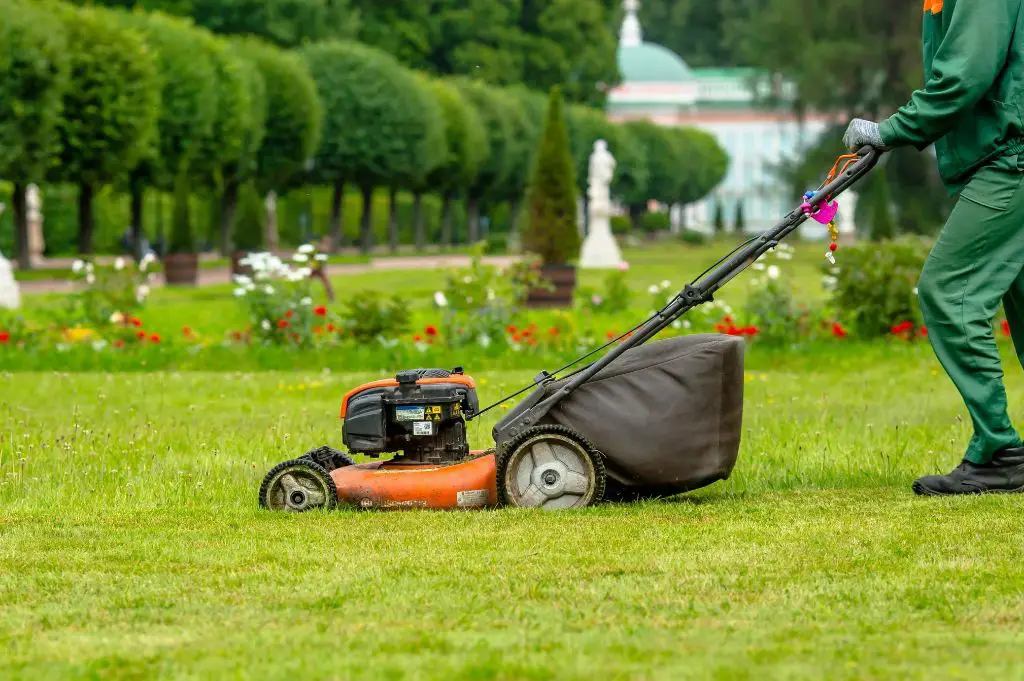There are a few key differences between self-propelled lawn mowers and push mowers. Self-propelled mowers have a motor that powers the wheels, allowing the mower to move forward on its own without being pushed. Push mowers require the operator to physically push the mower to move it. Here’s a quick overview of some of the main differences:
Page Contents
Power Source
Self-propelled mowers have an engine or motor that powers the drive wheels or transmission to move the mower forward. This allows the operator to simply walk behind and guide the mower rather than having to push it. Push mowers rely solely on human power to move them – the operator must push the mower along the grass to cut it.
Convenience
Self-propelled mowers are more convenient and require less physical effort from the operator. The powered wheels mean you don’t have to push the full weight of the mower, making mowing slopes and large yards much easier. With a push mower, the operator has to push the full weight themselves which can be tiring.
Speed
Self-propelled mowers can generally move faster than push mowers. The powered wheels allow a self-propelled mower to maintain a brisk walking pace as the operator guides it along. Push mowers are limited to the speed the operator can physically push them.
Maneuverability
Push mowers are often more maneuverable than self-propelled models. Without the drive wheels, push mowers are very lightweight and can pivot and turn quickly. Self-propelled mowers tend to be heavier and can’t turn or change direction quite as nimbly.
Hills
Self-propelled mowers excel at mowing up and down slopes and hills thanks to the powered wheels. Push mowers can lose traction and be difficult to control on hills, especially when pushing a mower down a slope. Self-propelled models make quick work of hilly terrain.
Cost
In general, self-propelled mowers come with a higher price tag than push mowers. The engine/motor and drive system adds to the complexity and manufacturing costs. Push mowers are very simple mechanically and therefore cheaper to produce.
Maintenance
There’s more maintenance required on a self-propelled mower. The engine, transmission, belts, cables etc need regular upkeep and servicing. Push mowers have very few parts that need maintenance.
Cutting Width
Self-propelled mowers typically have wider cutting decks, often 20-22 inches or more. Push mowers may have narrower widths around 16-18 inches. The wider deck on self-propelled models allows more grass to be cut in fewer passes.
Weight
| Mower Type | Average Weight |
|---|---|
| Self-Propelled | 70-100 lbs |
| Push | 25-40 lbs |
As shown in the table, self-propelled mowers are significantly heavier than push mowers on average. This is due to the sturdier construction and powered drive system. Push mowers are designed to be as lightweight as possible.
Who Are They For?
Self-propelled mowers are ideal for mowing large yards or yards with hills or uneven terrain. They are designed for efficiency and ease of use. Push mowers are great for smaller, flat yards where maneuverability is key. Someone wanting an inexpensive and very lightweight mower would do well with a push model.
Popular Features
Some other features common on each mower type:
Self-Propelled Mowers
- Larger fuel tanks for longer mowing
- Steel or aluminum deck construction
- Multiple speed settings
- Cruise control
- Disc drive wheels
- Electric start
Push Mowers
- Hard plastic or composite decks
- Foam filled wheels
- Folding/stowable handles
- Low profile for storage
- Grass catchers
Conclusion
While both self-propelled and push mowers accomplish the same task of cutting grass, they go about it in very different ways. Self-propelled models utilize an engine and powered wheels to automate the mowing process. Push mowers rely solely on human power and are more affordable and maneuverable. When choosing between them, consider your yard size, terrain, budget and any physical limitations that may make pushing a mower difficult. Either can be a great option for a well maintained lawn with the right mower matched to the job.
